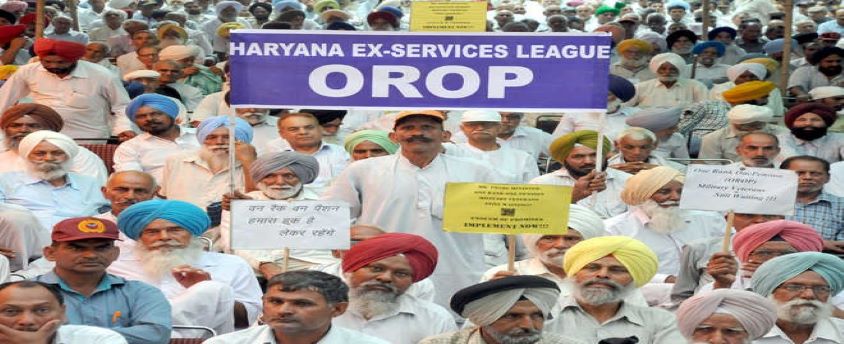One Rank One Pension (OROP) Policy
14, Mar 2023

Prelims level : Policies
Mains level : GS-II Functions and responsibilities of the Union and the States, issues and challenges pertaining to the federal structure, devolution of powers and finances up to local levels and challenges therein.
Why in News?
- A three-judge Bench led by Chief Justice of India D.Y. Chandrachud ordered the government to also detail the modalities of the payment of OROP
What dis the apex court observed?
- The Supreme Court has directed the Ministry of Defence (MoD) to file a three-page note specifying the exact quantum of arrears due to be paid under the One Rank One Pension (OROP) scheme, while noting that it is “sad” that four lakh retired defence personnel have already died waiting for their pension.
- A three-judge Bench led by Chief Justice of India D.Y. Chandrachud ordered the government to also detail the modalities of the payment of OROP and “prioritisation” of disbursement, that is, first to defence widows and the oldest of retirees, in the note.
What is OROP Policy?
- OROP means the same pension, for the same rank, for the same length of service, irrespective of the date of retirement.
- The concept was provoked by the then decision by Indira Gandhi-led government, in 1973, two years after the historic victory in the 1971 Bangladesh war.
How did the issue escalate?
- The Rank pay was a scheme implemented by the Rajiv Gandhi-led government in 1986, in the wake of the 4th Central Pay Commission.
- It reduced the basic pay of seven armed officers’ ranks of 2nd Lieutenant, Lieutenant, Captain, Majors, Lt. Colonel, Colonels, Brigadiers, and their equivalent by fixed amounts designated as rank pay.
How was it reviewed?
- In 2008, Manmohan Singh led Government in the wake of the Sixth Central Pay Commission (6CPC), which discarded the concept of rank-pay.
- Instead, it introduced Grade pay, and Pay bands, which instead of addressing the rank, pay, and pension asymmetries caused by ‘rank pay’ dispensation, reinforced existing asymmetries.
What are the Issues with this pension policy?
- The causes that inform the OROP protest movement are not pension alone, as armed forces veterans have often tried to make clear, and the parliamentary committee recorded.
- The issues, veterans emphasize, are of justice, equity, honor, and national security.
- The failure to address the issue of pay-pension equity, and the underlying issue of honor, is not only an important cause for the OROP protest movement but its escalation.
What is the Present status?
- PM Modi-led government has accepted the OROP.It has already released Rs. 5500 crores to serve the purpose, but still, there are some grievances from the veterans’ side.
- It refined Pensions for all pensioners retiring in the same rank as the average of the minimum and maximum pensions in 2013.
- The veterans noted governments’ proposal as one rank many pensions since the review of 5 years would lead to differences in pension between senior and a junior.







